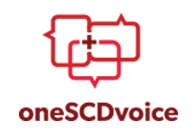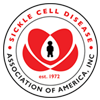Trusted Resources: Evidence & Education
Scientific literature and patient education texts
Assessing Disease Knowledge and Self-Management in Youth With Sickle Cell Disease Prior to Transition
source: Journal of Pediatric Oncology Nursing
year: 2018
authors: Speller-Brown B, Varty M, Thaniel L, Jacobs MB
summary/abstract:Introduction:
Transition of medical care from pediatrics to adult can be challenging and difficult. Until the 1970s, only half of patients diagnosed with sickle cell disease (SCD) reached adulthood. As a result of patients living longer, there is a growing need to understand factors that influence readiness to transition. This descriptive study examined age-specific SCD knowledge, self-management skills of patients, and education goals in a convenience sample of patients and their parents.
Method:
One hundred eighty-three transition surveys were distributed during scheduled hematology clinic visits. Surveys were analyzed with descriptive statistics to determine differences of knowledge between age groups, self-care skills, vocational supports, and educational goals. The parent group consists of children aged 0 to 4 years (32), 5 to 8 years (52), 9 to 11 years (12); the child group consists of children aged 9 to 11 years (24) and 12 to 15 years (31); and adolescent and young adult (AYA) group consists of children aged 16 to 21 years (32).
Results:
Indeed, 50% of parents of the 0 to 4 years age group and 33% of 5 to 8 years age group knew their child’s baseline hemoglobin. Only 38% of patients aged 16 to 21 years knew their baseline hemoglobin. However, 79% of patients aged 9 to 11 years, 74% of patient aged 12 to 15 years, and 78% of AYAs could name their hematology provider. Only 66% of patients aged 16 to 21 years knew what symptoms required medical attention.
Discussion:
Most patients and parents had adequate basic knowledge regarding SCD. AYAs lack the disease knowledge necessary to transition care away from parents to become more independent. An assessment for transition readiness should be ongoing to include disease-specific knowledge and self-management skills.
DOI: 10.1177/1043454218819447
read more
Related Content
-
UH Researcher Reports the Way Sickle Cells Form May Be Key to Stopping ThemUniversity of Houston associate professo...
-
NFL Broadcaster Solomon Wilcots and Emmaus Life Sciences Kick Off “Sideline Sickle Cell” Campaign during...Emmy Award-winning NFL broadcaster Solom...
-
Sickle Cell: Call The Midwife Shines Spotlight on DiseaseViewers and people with sickle cell dise...
-
Blood Transfusions: What You Need to Know and Do (Part 3: IRON OVERLOAD)https://www.youtube.com/watch?v=aXURPZav...
-
IASCNAPA Sickle Cell Disease Conference: Treating the Whole PersonDate: April 14-15, 2021 Place: Online/V...
-
Students With Sickle Cell Disease Stay on Track With Help From St. Louis Children’s HospitalBrandon Gardner graduated Friday on sche...
-
Improving the Quality of Care for Adolescents and Adults With Sickle Cell Disease—It’s a Long RoadThe World Health Organization defines qu...
To improve your experience on this site, we use cookies. This includes cookies essential for the basic functioning of our website, cookies for analytics purposes, and cookies enabling us to personalize site content. By clicking on 'Accept' or any content on this site, you agree that cookies can be placed. You may adjust your browser's cookie settings to suit your preferences. More Information
The cookie settings on this website are set to "allow cookies" to give you the best browsing experience possible. If you continue to use this website without changing your cookie settings or you click "Accept" below then you are consenting to this.




 +myBinder
+myBinder
